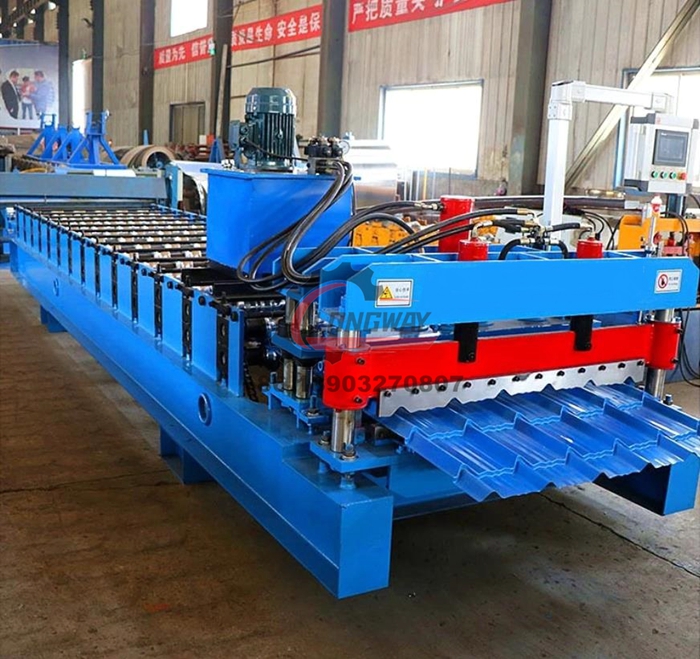purlin metal stud and track machine
The Advancements in Purlin Metal Stud and Track Machines
In the ever-evolving world of construction and fabrication, the importance of efficient and versatile machinery cannot be overstated. Among such innovations, purlin metal stud and track machines have emerged as vital tools that significantly enhance the production processes involved in metal construction. These machines are designed to streamline the fabrication of metal framing systems that are crucial in building structures, both residential and commercial.
Understanding Purlins and Metal Studs
Before delving into the machinery itself, it's essential to comprehend the significance of purlins and metal studs in construction. Purlins are horizontal structural members used to support the roof and are often essential in distributing the weight of the roofing materials. Metal studs, on the other hand, are used instead of traditional wood framing to create walls, ceilings, and other structural applications. They are lightweight, resistant to pests, fire-proof, and provide consistent quality, making them ideal for various building projects.
The Role of Purlin Metal Stud and Track Machines
Purlin metal stud and track machines automate the production of both metal studs and tracks, which are essential components in constructing non-load bearing walls and ceilings. These machines optimize the manufacturing process by enhancing precision, speed, and reducing material waste. Their ability to quickly create custom lengths and profiles allows for a more flexible approach to construction, catering to specific project requirements.
How Do They Work?
The operation of purlin metal stud and track machines usually involves several key stages. Firstly, coils of metal sheets are fed into the machine, which helps to ensure the materials are prepared for profiling. The machine then employs a series of rollers to shape the metal into the desired profiles, creating tracks and studs of various sizes and specifications.
One of the most remarkable features of modern machines is their computer numerical control (CNC) technology. This allows for highly precise cuts and designs, greatly enhancing the consistency of the finished products. The integration of CNC capability also means that adjustments can be made on-the-fly without requiring manual recalibration, significantly saving time and improving efficiency.
Benefits of Using Purlin Metal Stud and Track Machines
purlin metal stud and track machine

The advantages of utilizing these machines resonate through multiple facets of the construction industry
.1. Increased Efficiency Traditional methods of stud and track fabrication are labor-intensive and time-consuming. Automation cuts down the production time dramatically, allowing for faster project completion.
2. Cost-Effectiveness By reducing labor costs and minimizing waste through precise manufacturing, these machines contribute to a lower overall production cost.
3. Quality Control The use of automated machinery ensures consistent quality throughout the manufacturing process. This minimizes errors and keeps production standards high.
4. Flexibility Manufacturers can easily program machines to create different profiles based on specific project needs, making it easier to adapt to the unique requirements of each job.
5. Sustainability With reduced waste and the ability to work with recycled materials, purlin metal stud and track machines contribute to more sustainable building practices.
Conclusion
As the construction industry continues to embrace technological advancements, purlin metal stud and track machines stand out as crucial innovations that enhance productivity and quality. Their ability to streamline the process of creating essential structural components aligns with the increasing demand for efficiency in building practices.
With a focus on precision, customization, and sustainability, these machines not only help in meeting the contemporary challenges of construction but also pave the way for a more innovative and effective approach to fabricating building materials. As their technology continues to evolve, one can only anticipate further enhancements that will shape the future of construction and metal fabrication for years to come.
-
Roof Panel Machines: Buying Guide, Types, and PricingNewsJul.04, 2025
-
Purlin Machines: Types, Features, and Pricing GuideNewsJul.04, 2025
-
Metal Embossing Machines: Types, Applications, and Buying GuideNewsJul.04, 2025
-
Gutter Machines: Features, Types, and Cost BreakdownNewsJul.04, 2025
-
Cut to Length Line: Overview, Equipment, and Buying GuideNewsJul.04, 2025
-
Auto Stacker: Features, Applications, and Cost BreakdownNewsJul.04, 2025
-
Top Drywall Profile Machine Models for SaleNewsJun.05, 2025








